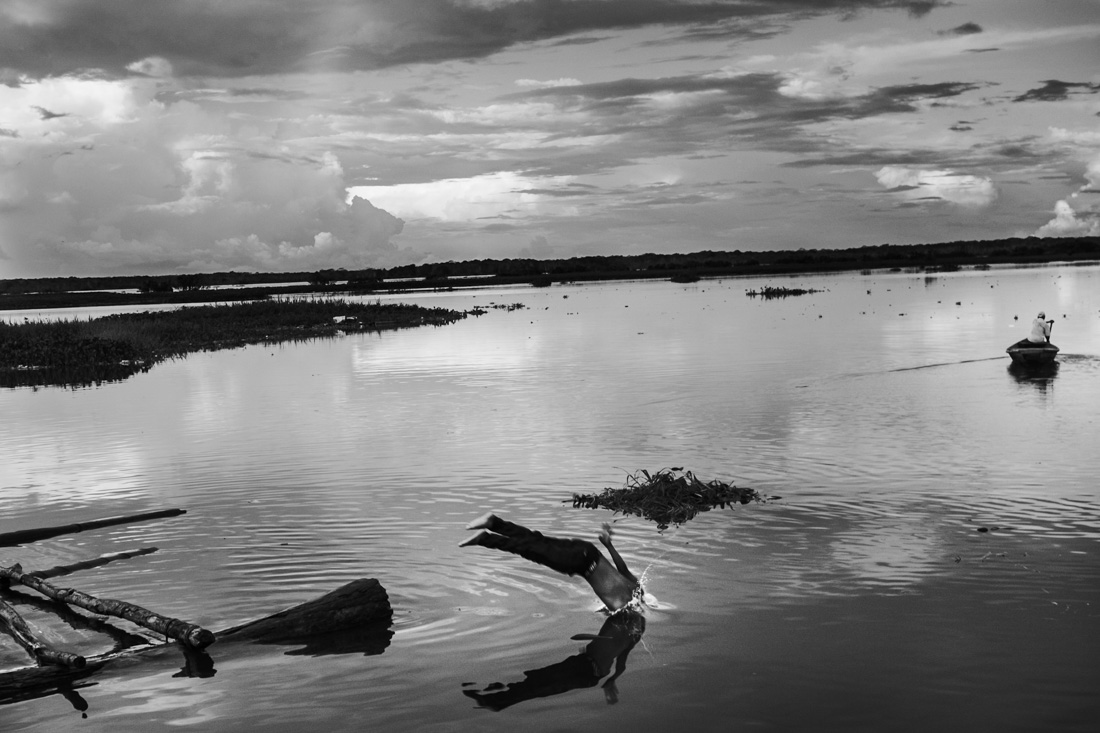Daily Life - NOMINEE: Leonardo Carrato
Leonardo Carrato
En Bora - A Life of a Shaman
Support this photographer - share this work on Facebook.
“The hawk wanted to kill his father too, so there would be no justice and then the people cut its two legs and the hawk went to his grandfather Úúwuáá Jénimúé Diiwúú, who healed it with good yucca. The grandfather said that this is what will happen to anyone who starts curses.”
Part of an old Bora tale
“Soy Indio” (“I’m Indian”) and “Soy Bora” (“I’m Bora”). This is the way Aladino defines himself. Aladino is a shaman from Pebas, a remote village in the heart of the Peruvian Amazon. Shamans are healers, using the coca plant (ground to perfection), tobacco, sugar cane rum, ampiri (a mixture of tobacco with wild tree salt) to heal local people.
“- We came to learn the songs and stories to heal. Then the grandfather said: - Grandchildren, you will be able to learn and without a doubt, he said, I will teach you everything, from the beginning to the end.”
Part of an old Bora tale
With the world completely globalized, Aladino is now an exile in his own land. His culture is fading and it is becoming harder to provide for his wife and 7 children living as a true Bora shaman. His most important healing element, the coca plant, is the same kind used to fabricate cocaine, and many of the locals are forced to work in the drug trafficking industry to make a living. The healing method practiced by Aladino besides the large consumption of coca, tobacco and alcohol, also includes, in a spiritual way, getting inside his own body the patient's illness. This is a battle which could lead to serious health consequences. He recently had stomach surgery because of the physical harm done by that combination. As a reminder, he carries a scar from end to end on his belly. Aladino believes that everything he’s been through these last couple of years could’ve happened by a curse made by a rival tribe. In order to become a powerful shaman again, he needs to devote all his time to connect and be guided by the Bora spirits.
“Do not despair when something happens to you, I will be looking after you until you exist in this world.”
Part of an old Bora tale
During these three-year project, which still on going, Aladino struggles experiencing his natural healing methods, along with his culture, practically disappearing. The lack of public investments in basic assistance, the depression and the harm coming of drug trafficking and alcoholism are pushing the local's interests away from their culture around the Peruvian Amazon. The shaman doesn't want his story to be a common one and he will definitely resist not to be like everyone else.
About author:
Born in Minas Gerais, Brazil, in 1983, Leo Carrato threw himself into a photographic journey in 2012 driven by his passion. Nowadays Leo is based in Rio de Janeiro and works as a photographer and filmmaker.
While working as an independent photographer in 2013, Leo developed the project “The Uprising,” which is an inside view of the riots that drove millions of people out on the streets of Rio de Janeiro. In 2014, after being inspired by the upcoming World Cup and the Olympics, Leo started the 2-year multimedia project “Article 6 - We Don’t Want to Become a Statistic,” which explores the core of Rio’s social problems. Both projects achieved important visibility and have been exhibited nationwide.
The desire to connect with his continent’s native culture and the aspiration to build its imagistic spiritual map carried Leo to the Amazon. Since 2015, he has been working on a long-term project about a native Bora shaman deep inside the Peruvian rainforest. Also, to uncover the Amazon’s spiritual beliefs, Leo shot a documentary in 2017 called “Pena e Maracá – A Encantaria do Fundo” about a peculiar natural healing method practiced mainly by women in the exquisite Marajo Island, north of Brazil.
Currently, Leo is a member of the VII Mentor Program.

